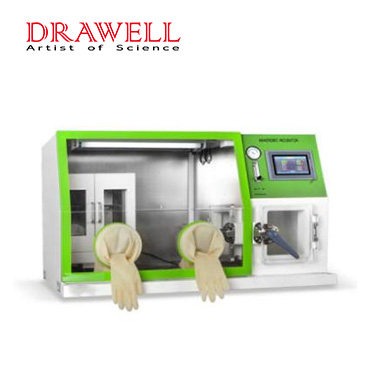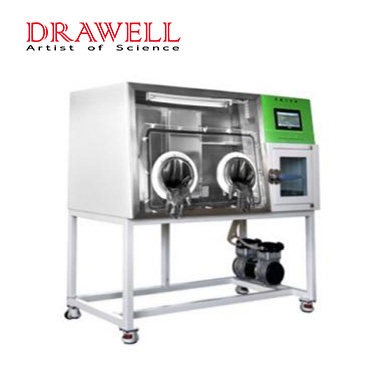The anaerobic incubator represents a specialized apparatus designed to foster and manipulate bacteria within an oxygen-free environment. Its functionality extends to nurturing even the most demanding anaerobic organisms while circumventing the peril of their exposure to oxygen in an atmospheric setting. As such, this device stands as an ideal instrument for both anaerobic biological assessments and scientific investigations. Moreover, its versatility shines through as it accommodates various operational modes, effectively providing optimal conditions for the proliferation of microaerophilic bacteria. In this article, we delve into the essential considerations for installing and using anaerobic incubators.

Prerequisites for Anaerobic Incubator Installation
Ensuring the proper installation of an anaerobic incubator involves adhering to three key guidelines:
Optimal Placement: The unit should be positioned in an area characterized by minimal temperature fluctuations, enabling efficient operation. Shield it from direct sunlight and distance it from heat-emitting equipment. Stability in placement is paramount.
Secure Gas Cylinder Positioning: The mixed gas and nitrogen cylinders must be securely positioned, each equipped with a pressure-reducing valve (inclusive of a pressure gauge) and placed suitably.
Air Circuit Connection and Assessment: Thoroughly connect the air circuit while rigorously inspecting for potential air leaks. Employ sealant where necessary to prevent leakage at connecting points.
Guidelines for the Prudent Use of Anaerobic Incubators
The judicious operation of an anaerobic incubator necessitates adherence to the following eleven precautions:
Optimal Operating Environment: Ideally, set up the instrument in an environment characterized by clean air and minimal temperature fluctuations.
Comprehensive Familiarization: Prior to commencing operations, ensure a thorough understanding of the operational instructions for each component of the auxiliary instruments and gauges, grasping the correct utilization methods.
Culturing within Anaerobic Conditions: Only introduce cultures into the operational chamber after the prescribed anaerobic environment has been established.
Avoid Overcrowding: Refrain from overloading the chamber with items, as this may compromise temperature uniformity. Prevent obstructions of the circulating fan and air duct.
Safeguarding Anaerobic State: In the event of a malfunction (such as gas interruption), the anaerobic conditions can be maintained within the operational chamber for up to 10 to 12 hours. Should the duration exceed this window, consider alternate treatments for the culture.

Vigilance Against Air Leaks: Regularly monitor the gas pathway for any indications of air leakage.
Gas Cylinder Replacement: During gas cylinder replacement, exercise caution to securely fasten the tubing to prevent the inflow of oxygen-rich gases.
Adhering to Vacuum Pump Usage: Utilize the vacuum pump as directed and routinely inspect and replenish the oil.
Cautious Item Placement: Prohibit the placement of flammable, explosive, or corrosive items within the chamber. Ensure a cooling buffer zone outside the incubator to preserve its cooling efficiency.
Proper Shutdown Protocol: Upon discontinuing use, power down the anaerobic incubator by deactivating the main power button and the rear equipment switch.
Thorough Drying of the Chamber: Before storage, dry the interior of the chamber using the following method: Set the incubator temperature above 40°C, allow it to run steadily for two hours, open the chamber door for 10 minutes every half hour, and then repeat this process 3-5 times.
In summary, this article has provided a comprehensive overview of the imperative guidelines for the installation and operation of anaerobic incubators. For additional insights into anaerobic incubator precautions, consider reaching out to the manufacturer. Their specialized advice can prove invaluable when troubleshooting issues with your anaerobic incubator, ensuring optimal performance and results.





Comments (0)